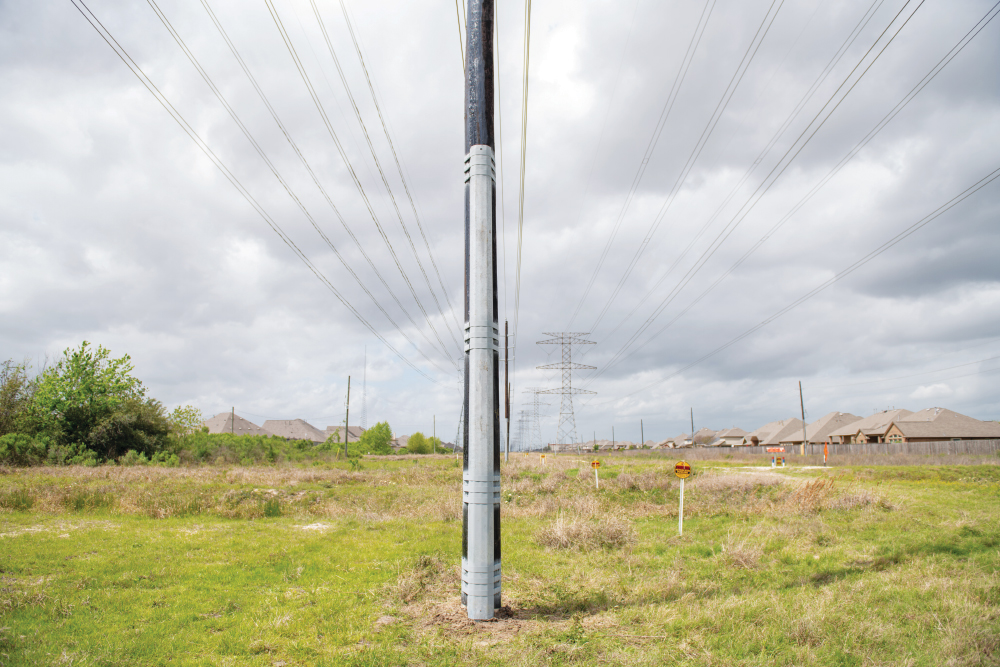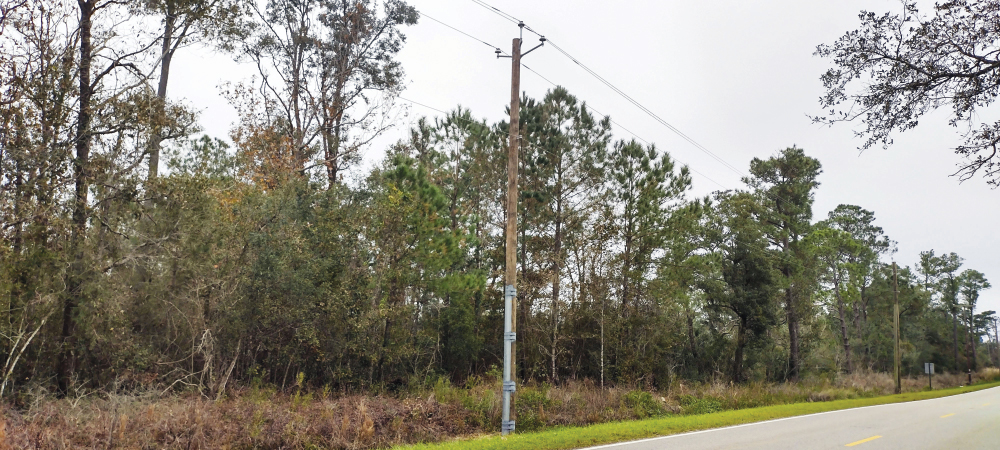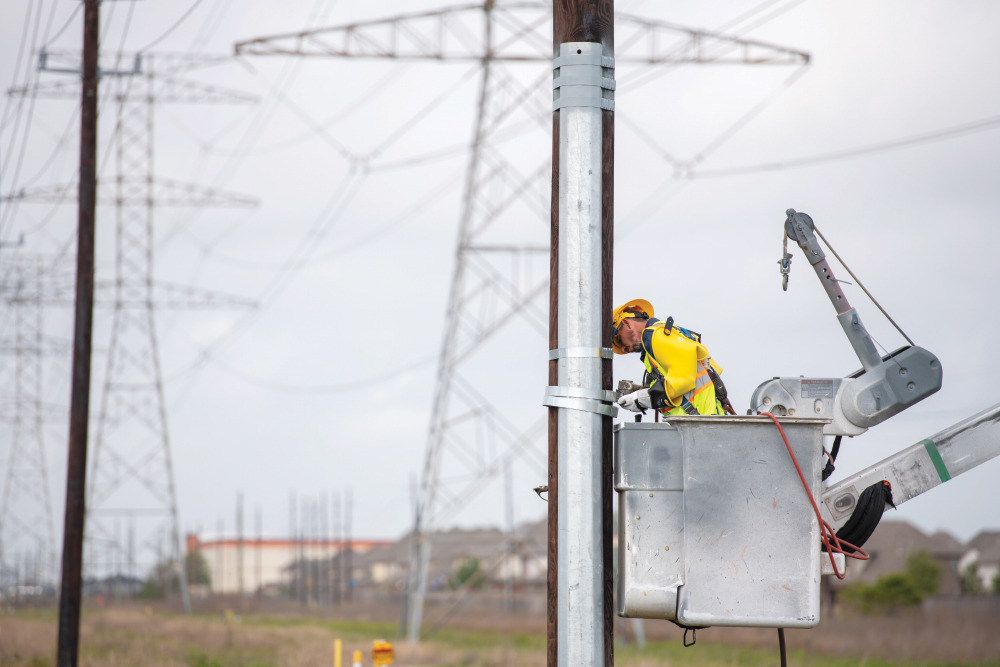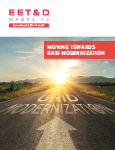On September 28, 2022, Category 4 Hurricane Ian made landfall in southwest Florida. Per the Saffir-Simpson Hurricane Wind Scale, a Category 4 hurricane has sustained wind speeds of 130 — 156 mph and can result in “catastrophic damage.” As one of the strongest and costliest hurricanes to ever hit Florida, an estimated 3.28 million customers lost power within the state. While tragic, the storm provided a unique opportunity to study the performance of utility poles that had been strengthened by a tough truss system developed by an Atlanta-based structural resiliency and utility asset management company. The study revealed several insights:
Trusses are a long-term, life-extension solution
Far from mere “temporary” fixes, trusses are a capital improvement that can extend a pole’s productive life by 30 or more years — near the expected lifespan of a new pole. Certain engineered trusses can restore poles to code strength or can upgrade a pole by 1, 2 or 3 equivalent classes.
Trusses play a powerful role in grid resilience
Trusses enable poles to withstand hurricane conditions without service interruption. Relative to replacement with a new pole, using a truss to upgrade a pole proves to be a faster, less costly and at least as effective a method of ensuring greater asset strength and resilience.
Trusses are an essential grid asset prioritization tool
Too often, utilities grapple with budgetary decisions regarding the allocation of funds between expanding their grid and maintaining or improving their existing assets. Rather than force a choice between adding structures to the grid or replacing old structures with new ones, trusses provide a strong alternative. Using trusses to return poles to necessary strength frees up money for other priorities.
Measuring the role of trusses in grid resilience
The increasing frequency and severity of extreme weather events has elevated resilience to a major concern for the operators of electrical and telecommunications grids. Resiliency performance is characterized by two primary factors:
- How well a system performs in a major storm and minimizes service outages
- How quickly service is restored following any outages
Structural resiliency is one aspect of overall grid resiliency that, when addressed efficiently and effectively, can improve resiliency, reliability and safety — ensuring performance, mitigating downtime and reducing restoration costs. Trussing is a common approach to restoring, upgrading and hardening grid structures. A truss is a steel-constructed, structural addition designed to increase the strength and bending capacity of wood utility poles. Some trusses extend along decayed or damaged sections of the pole and transfer loads to areas of the pole that are structurally sound. Other trussing systems work in conjunction with sound wood poles to create a combined bending capacity greater than the original pole class rating.
Steel trussing systems have a long history of proven performance beginning in the mid-1960s. In the early years of use, trusses were perceived by utility companies as temporary solutions that may only extend the useful life of a pole for five to ten years. However, poles restored with trusses during this time can still be found in service today. Truss solutions have advanced significantly over the years, providing reliable decades-long life extension, and introducing additional design options that enhance bending capacity.
Measuring the long-term performance and resiliency of infrastructure assets like wood utility poles, and the equipment they support can be especially difficult. Among the factors complicating the performance measurement of grid assets is the unpredictability of climate-related stressors like extreme weather events and other natural crises. Beyond analyzing historical data, demonstrating the effectiveness of trusses in ensuring sufficient pole strength and resilience would require an assessment of pole performance following a major weather event. The Atlanta-based structural resiliency and utility management company had the opportunity to conduct such an assessment on 288 trussed poles in the aftermath of Hurricane Ian.
Storm-proven performance
Background
Extreme weather events along the Gulf and Atlantic coasts can result in forces that exceed the original capacity of installed utility poles. As such, increasing the strength of existing poles or installing new, higher-strength class poles may be necessary for improving resiliency. The truss upgrade systems increase the bending capacity of existing wood poles and provide an upgrade to the pole of one or more classes along the length of the truss.
The truss upgrade system consists of specially formed high-strength steel sections with a tapered “C” profile mated to the wood pole. High-strength steel banding is installed at specific locations of the top truss to keep the pole and truss engaged together. The strength and stiffness of both the wood and steel act together to provide an improved rated bending strength in the trussed portion of the pole.
In the years prior to Hurricane Ian, hundreds of upgrade systems were installed on poles along Florida’s Gulf Coast which would later be within 32 miles of landfall of Ian’s cone of influence for exposure to the highest wind speeds of the storm. Prior to the event, most of the truss upgraded poles visited for this field evaluation had already been in service for at least one typical inspection and treatment cycle of eight years.
To obtain real-world results of 288 truss upgrade reinforced poles following that major hurricane, the Atlanta-based structural resiliency and utility asset management company independently performed a post-storm field evaluation to determine the pole status, the survival rate, and whether the trussing system improved the resiliency of the poles.
Results and conclusions
Of the 288 truss upgrade poles, 283 had sufficient resiliency to survive Hurricane Ian. While there was a lack of conclusive evidence to definitively conclude failure, five of the upgraded poles in this study were replaced at some point following Ian.
The forensic physical evidence revealed poles with a truss upgrade system had less movement through the soil at groundline when compared to similar, unreinforced poles. This reduced movement directly correlates to reduced structure lean. The improved bearing area that the truss below ground provides can reduce structure lean after a wind event and is an additional resiliency benefit that an installed truss upgrade system provides.
Investigation and field observations
Extensive research and analyses were first conducted with available weather data and generated Hurricane Ian wind speed maps (cone of influence); and review of historical pole data. Maps were created of truss upgrade pole locations, site visits were performed post-hurricane, and existing conditions were photographed and documented. The forensic physical evidence was analyzed, and aerial and/or street level imagery for various pole locations was researched and analyzed as well. The National Hurricane Center (NHC) Tropical Cyclone Report of April 3, 2023, for Hurricane Ian was researched and reviewed.
The site visits occurred from March 20 to 24, 2023, in or generally near Port Charlotte, Florida, and included 288 truss upgrade poles. For the purposes of this study, each pole is identified by a unique, audit ID number. It should be noted that the pole owner is proactive at pole change-outs and system hardening regardless of pole serviceability. A replaced pole is not conclusive evidence of a prior pole failure.
A typical pole site visit for this study included but was not limited to, documentation of the following: GPS coordinates at the pole, a minimum of two photographs, documentation of the current pole condition and status, and information on replacement pole material (i.e. if replaced or double wood).
During the evaluation, each of the truss upgrade poles was classified into one of the following groups: resilient poles and event-impacted poles.
Resilient poles (Qty. 283)
Locations where the truss upgrade pole was deemed “resilient” and survived the event if the following conditions were true:
- The pole was still present and standing on the visit date.
- The pole did not have a replacement pole installed as a direct result of Ian-related forces. For instance, if the trussed pole was double wood and the new pole was installed before Ian.
Potential event-impacted poles (Qty. 5)
Locations in which the truss upgrade pole had potentially been replaced because of the event were deemed “suspect” if the following conditions were met or could not be ruled out:
- A replacement pole was installed during the timeframe having the potential to be event-related, such as immediately following Ian.
- Replacement poles with 2022 manufacturing dates received increased analysis to determine the installation date range and whether there was a potential correlation with the event.
An additional trussing benefit
Leaning poles can pose a threat to service continuity as well as to public safety. A leaning or fallen pole might lead to power outages and can present electrocution hazards. In reviewing post-Ian pole data, the study highlighted an additional trussing benefit. Of the proven resilient poles, one particular truss ugrade pole and its adjacent un-trussed poles illustrated how trusses can reduce pole leaning.
This pole was a 40 ft Class 5 pole prior to reinforcement in 2012. The forensic physical evidence revealed this truss upgrade pole survived loading sufficiently to cause a slight structure lean measured by approximately two inches of displacement at groundline. The two adjacent unreinforced, 40 ft Class 5 pre-Ian poles had greater lean, with approximately 3.5 inches and approximately 4.5 inches of displacement at groundline respectively, in comparison to the truss upgraded pole. These observations infer a distinguishable benefit of improved foundation capacity provided by the truss upgrade pole installation.
Final summary
A key part of resiliency for a grid system is ensuring its supporting structures are up to the task. Just as a chain is limited by its weakest link, so too are improvements from the latest smart grid technologies if numerous circuits are on the ground from pole failures. Such scenarios become obvious following a major event, but unfortunately, the supporting structures that hold up the grid are often overlooked or ignored until that scenario becomes reality.
Fortunately, as demonstrated in the preceding case study, effective solutions exist which can improve the structural resiliency of in-service wood poles. The improved resiliency provided by the Atlanta-based structural resiliency and utility asset management company truss solutions demonstrate improved performance and reduced damage, enabling poles to remain in service or return to service more rapidly than if replacement was required.
Furthermore, given the expediency of a professional tough truss installation, especially compared with pole replacements, a pole owner can more rapidly reduce risk, address safety and improve their structural resiliency.

Nelson Bingel has more than 30 years of industry experience focused on structural aspects of overhead lines. He received a BSME degree from Purdue University and has worked on research and development of improved structure inspection processes and restoration systems along with software for field strength and loading evaluation. Bingel was chairman of the Strength and Loading Subcommittee of the NESC for two code cycles and was chairman of the full NESC Committee from 2016 to 2023, and he will be the past chairman until 2028. Bingel is also vice chairman of the Accredited Standards Committee O5, which develops standards for new wood poles and crossarms. He retired after 30 years from Osmose Utilities Services, Inc.

Kris Neighbor holds a BS in civil engineering from the Georgia Institute of Technology, an AS in physics from Gordon College, is a licensed Professional Engineer (LA), and has an AWS D1.1 Structural Welding Certification. He is a member of ASCE, SEI, AWS, AISC, ICRI, IEEE and AMPP. He also is the inventor of the NeighborPlate utility pole restoration system (Patent Nos. 9,611,666, 10,081,963, and 10,526,809), temporary support structures for towers, (Patent No. 10,385,534) and has patents currently pending for other industry innovations.










